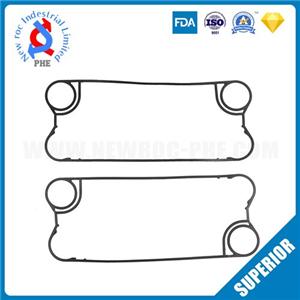Matters needing attention when debugging plate heat exchanger
After a long period of use, the plate heat exchanger will become fouled, which causes its heat transfer efficiency to be much lower than before. Therefore, we need to clean the plate heat exchanger. After the plate heat exchanger is cleaned, in order to ensure the plate heat exchange The normal use of the heat exchanger requires us to re-adjust the plate heat exchanger. The following briefly introduces the matters that need to be paid attention to when debugging.
1: A certain inspection site should be reserved around the location where the plate heat exchanger is installed.
2: Clean the pipes connected to it before installation to prevent debris, oil stains, welding slag and other debris from entering the plate heat exchanger, causing obstruction of the flow passage or damage to the heat exchanger plates. The plate heat exchanger has a small footprint and light weight. In addition to the volume of the equipment itself, there is no need to reserve additional space for inspection and installation. The thickness of the plate heat exchanger used in the plate heat exchanger is 0.6~0.8mm.
3: The sequence of the operation and shutdown of the plate heat exchanger
When the plate heat exchanger stops running, first close the high-pressure side medium valve, and then close the low-pressure side medium valve. Today, when high efficiency, environmental protection, and energy saving are exaggerated, plate heat exchangers have increasingly significant advantages in the field of heat exchange. They can be used in various processes such as heating, cooling and food disinfection. In terms of low-grade heat energy recovery, It also has significant economic benefits.
When the heat exchanger is running, first open the low-pressure side medium plunger valve, and then slowly open the high-pressure side medium valve after the medium fills the plate heat exchanger channels.
4: Check whether the clamping bolt is loose before putting it into use, and tighten it if necessary. In recent years, plate heat exchangers have replaced traditional shell-and-tube heat exchangers in airports, hotels, and commercial buildings, and have achieved good results.
5: If there are often large particles of mud or debris in the medium, the supporting decontamination device produced by our factory should be equipped in front of the plate heat exchanger. The plate heat exchanger has a low fouling coefficient, and the fluid rolls violently between the plates to form turbulence. The plate design avoids the existence of dead zones, making it difficult for impurities to deposit and block in the channels, ensuring a good heat exchange effect.
These are the points that we need to pay attention to when debugging the plate heat exchanger. If you have any questions, you can contact us.




